Ahead of the New Year Plant Hunt, Charlotte Rankin shares ten wildflowers to look out for this winter in the North East.
While wildflowers are typically associated with spring and summer, there are still wildflowers to be seen in flower during winter. Using British flora guides, we can expect around two-per cent of plant species to be in flower during the winter period such as the ‘all year rounders’. However, as result of warmer winters and springs, many wildflowers are extending their flowering period or flowering earlier than what we read in flower guides.
Providing valuable insight into how plants are responding to the changing climate, the Botanical Society of Britain and Ireland’s (BSBI) New Year Plant Hunt is an annual hunt for plants in flower over the New Year period. In some years, lists of over 100 plant species have been found in flower by plant hunters. Ahead of the New Year Plant Hunt, here are ten wildflowers that are frequently observed in flower during North East hunts.
Wildflowers to find this Winter
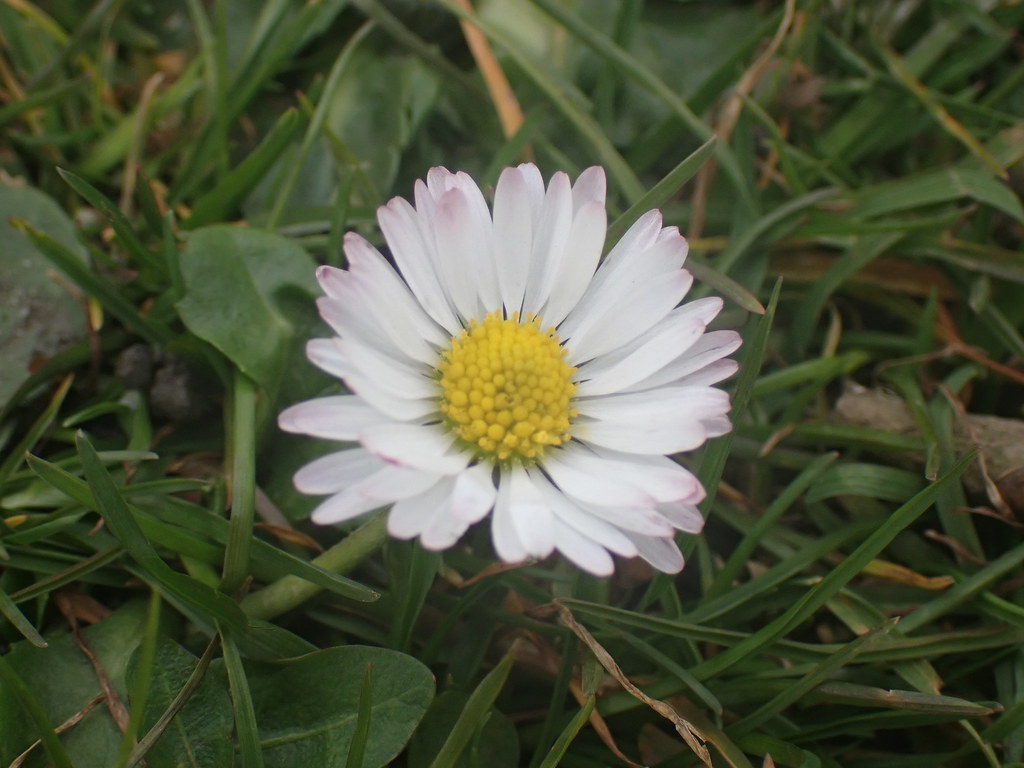
Daisy Bellis perennis
Daisy, paired with the Dandelion, is the most familiar member of the daisy family. The Daisy is an ‘all year rounder’ and is abundant in almost any short grass including garden lawns.
Flowers are solitary on leafless stems, with a rosette of leaves at the base of the plant. Each ‘flower’ is in fact made up of many: the yellow centre is made up of disc florets and the white ‘petals’ are ray florets. The flower heads are small (upto three cm wide) and the ray florets can be tinged with pink.
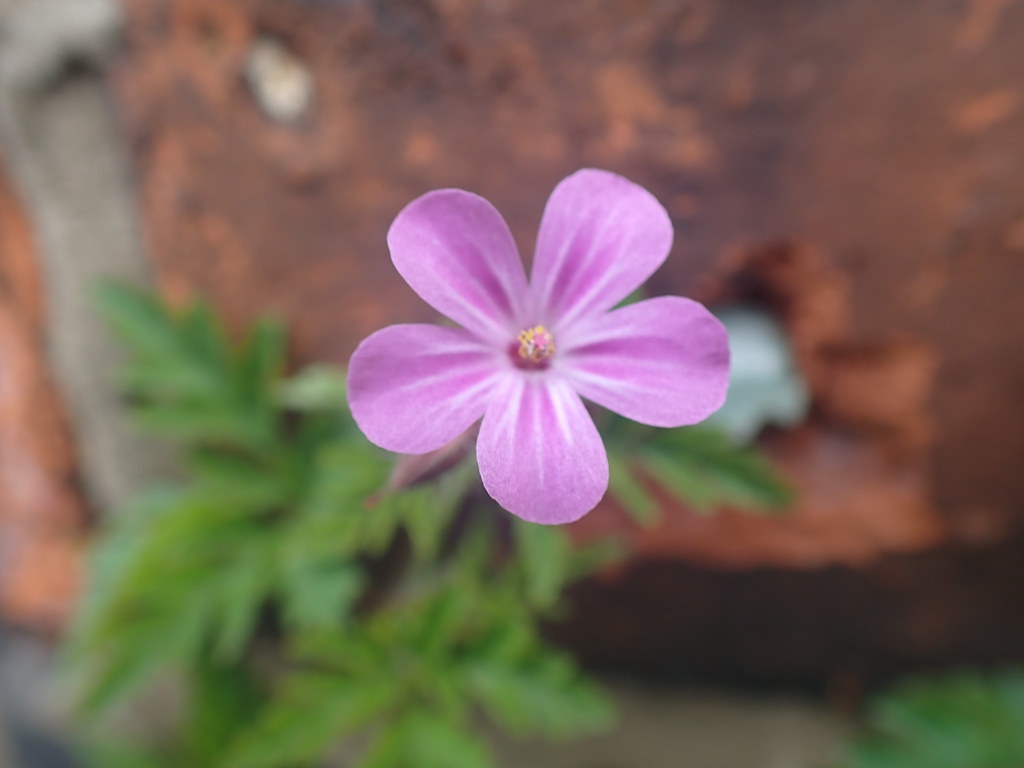
Herb Robert Geranium robertianum
A low-growing plant, Herb Robert bears small pink, and sometimes white, flowers with fern-like leaves. It tends to grow in shadier areas but can be found almost anywhere including along the cracks of pavements and walls.
Giving rise to its alternative name ‘Red Robin’, the leaves and stems redden with age. The stems and leaf stalks are covered in hairs. When crushed, the leaves also give an unpleasant odour hence another name of ‘Stinking Bob’.
Herb Robert belongs to the Geranium or ‘Crane’s-bill’ family, the latter referring to the seedpods that resemble a crane’s bill.
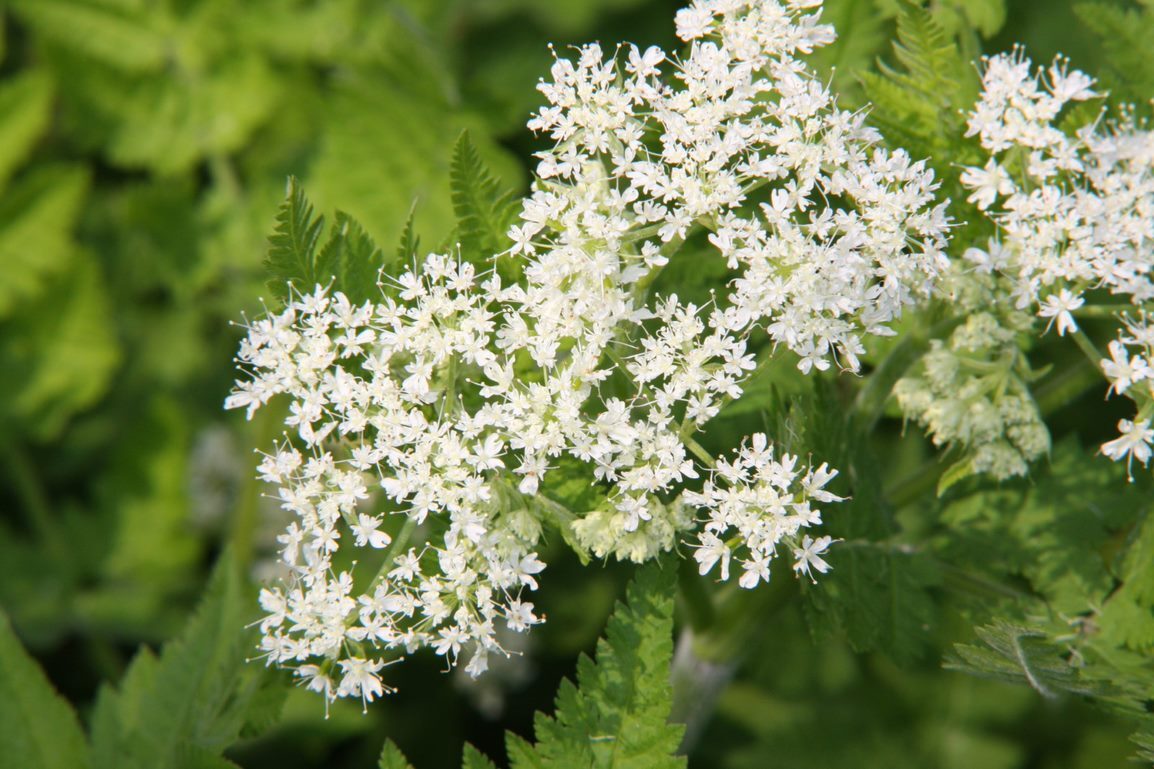
Cow Parsley Anthriscus sylvestris
Cow Parsley is a member of the carrot family. Despite being a ‘springtime specialist’, Cow Parsley is frequently recorded during the New Year Plant Hunt. This wildflower can be found along roadsides, woodland rides and even waste ground.
Characteristic of the carrot family, Cow Parsley has small flowers that are arranged in ‘umbels’. Its umbels are small at two – six cm wide. The leaves are finely cut and fern-like.
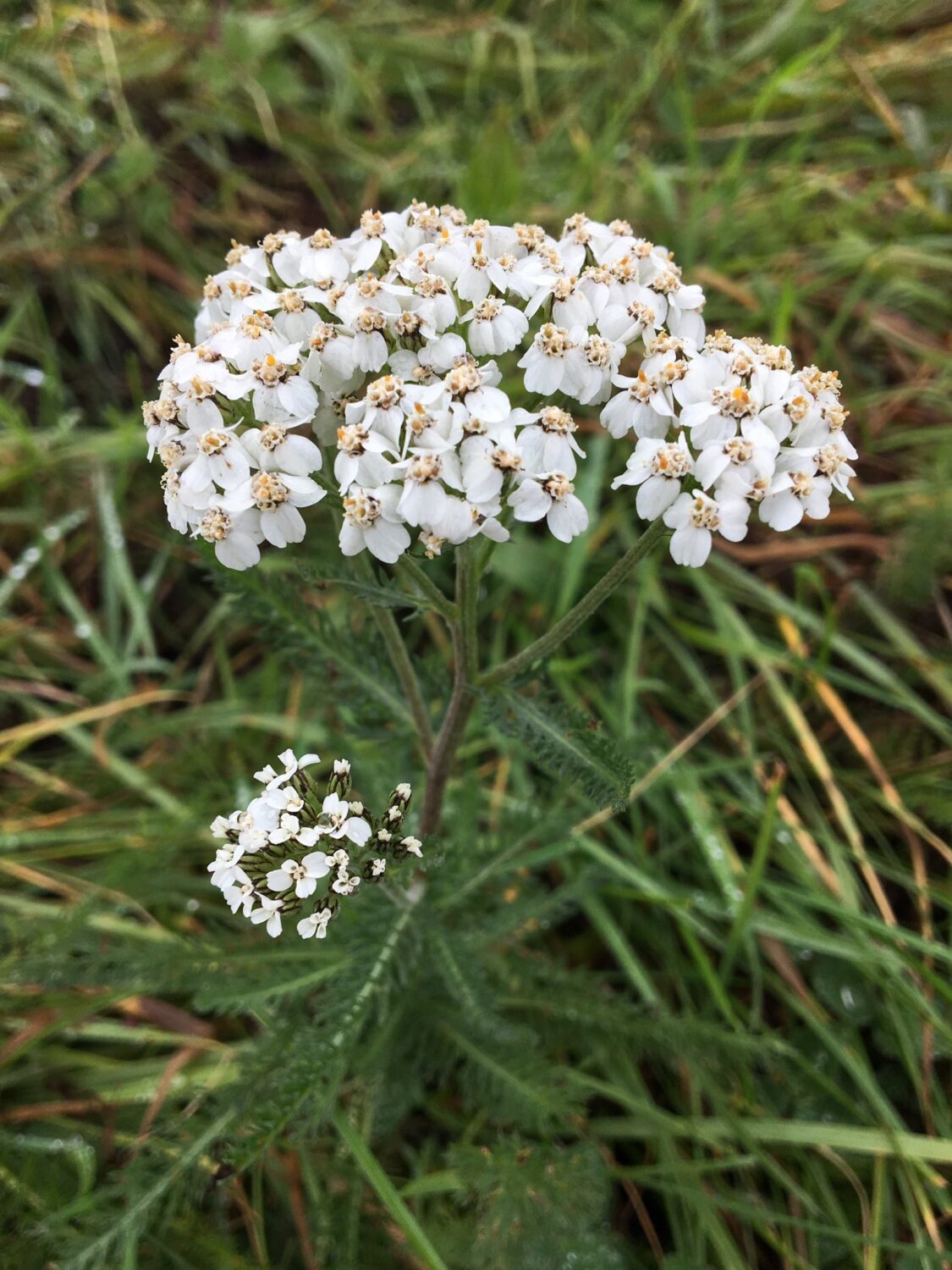
Yarrow Achillea millefolium
Yarrow is a member of the daisy family. It can be observed in a variety of grassy habitats and waste ground. It’s another ‘autumn straggler’ that can be observed in flower during the winter months.
The leaves of Yarrow are a key distinctive feature, being feathery and finely cut. Its Latin name ‘millefolium’ refers to its highly divided leaves.
Its white, and sometimes pink, flower heads are arranged in dense, flat-topped clusters. On closer inspection, each flower head has five ray florets and its centre florets are an off-white.
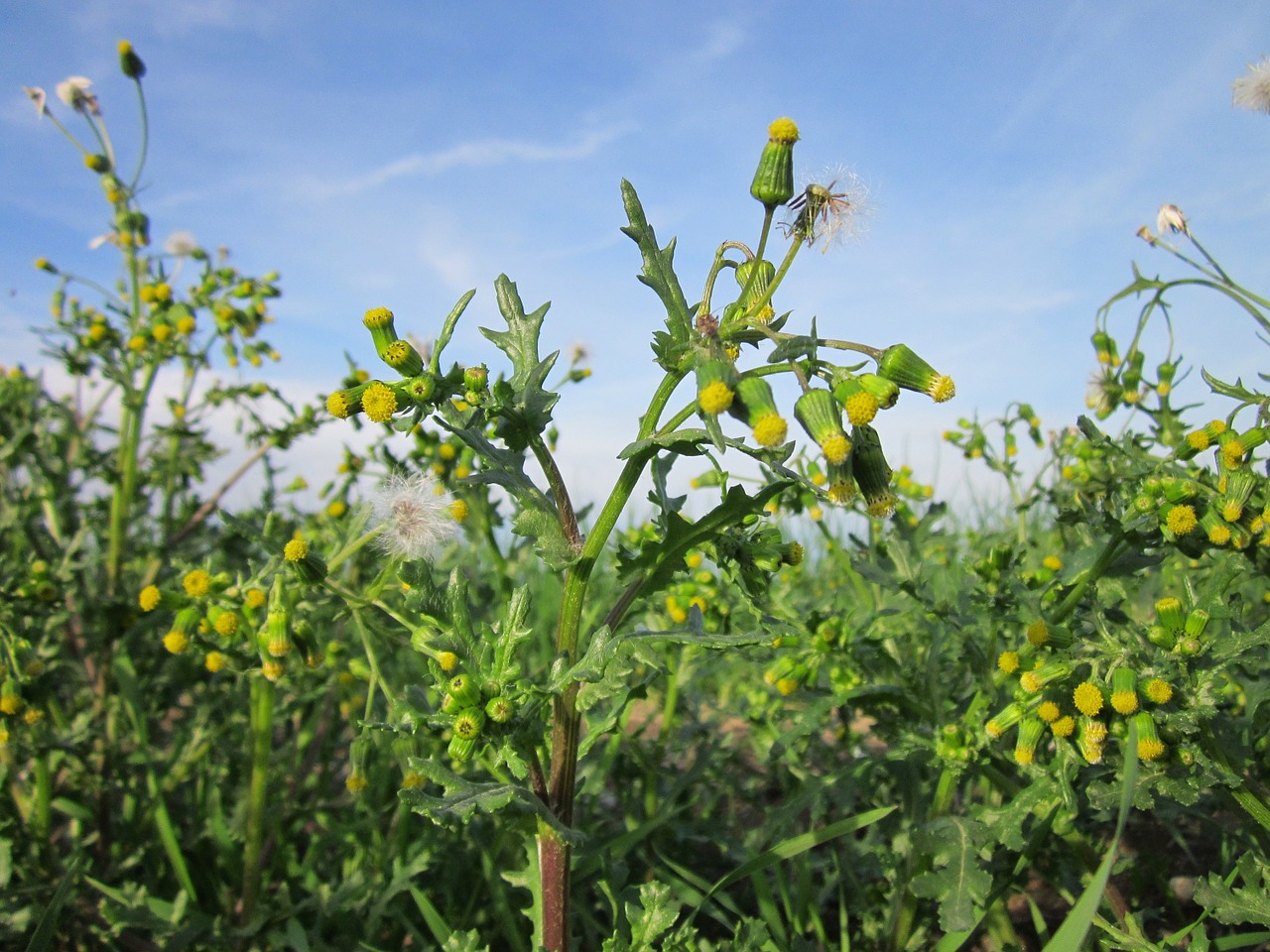
Groundsel Senecio vulgaris
Groundsel can be found growing almost everywhere, including disturbed ground, pavement cracks and walls. Its common name comes from the Old English ‘grundeswilige’ meaning ‘ground swallower’. An all year rounder, this wildflower species is likely to be observed during the New Year Plant Hunt.
While a member of the daisy family, the flower heads usually lack the petal-like ray florets of other daisies, giving the flowers a more inconspicuous appearance. Grouped in clusters that are often drooping, its small flower heads are just four mm across.
The leaves of Groundsel are toothed and strap shaped.
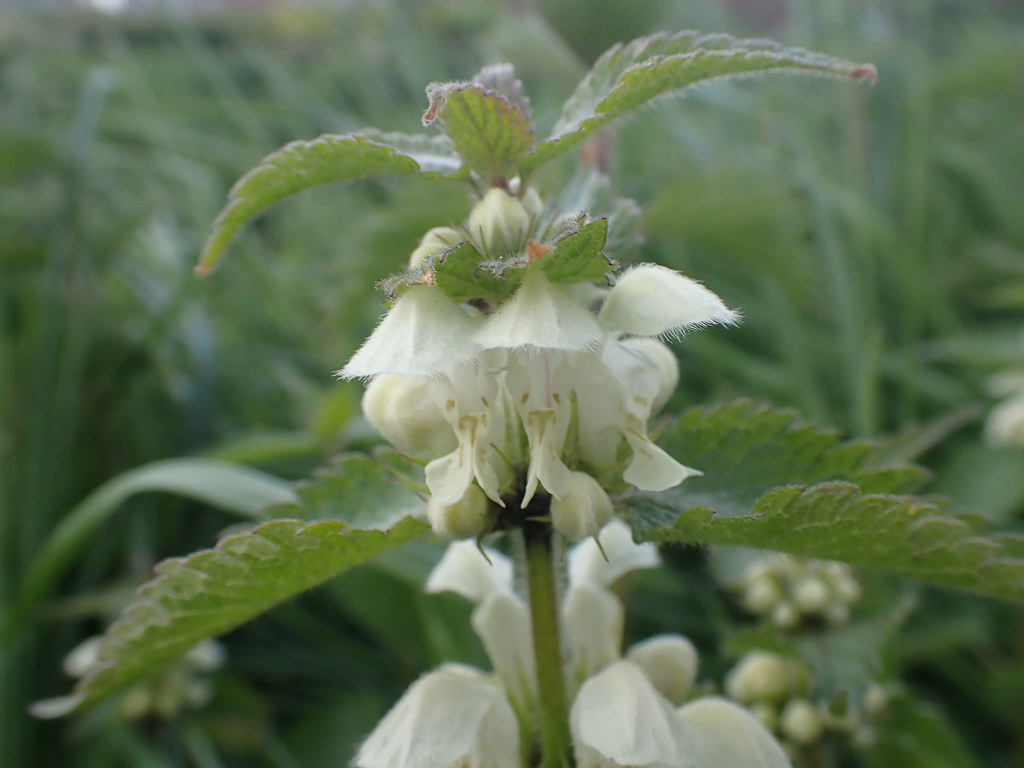
White Dead-nettle Lamium album
A member of the dead-nettle family, White Dead-nettle is a common plant of disturbed ground and grassy areas.
The white flowers are arranged in dense whorls and are larger than its dead-nettle relatives. Characteristic of dead-nettles, its five petals are fused together to form a corolla. The upper lip of the corolla is long and hooded, and hairy on the outside.
Each flower whorl has two leaves on opposite sides of the square stem. The toothed leaves resemble those of Stinging Nettle but its leaves do not sting when touched.
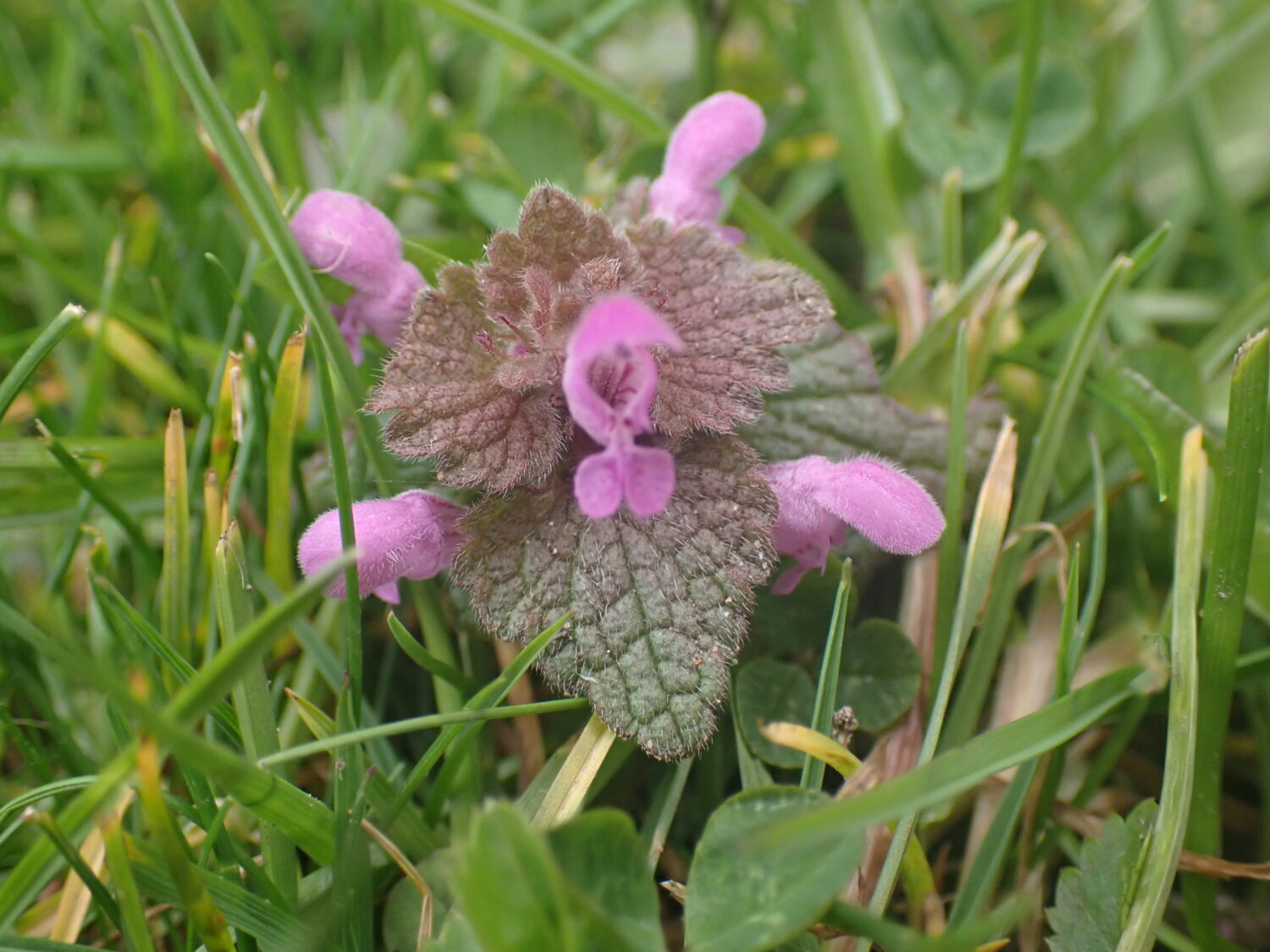
Red Dead-nettle Lamium purpurea
Red Dead-nettle is another member of the dead-nettle family. An annual, it is an abundant plant of disturbed ground. Arranged in whorls, its small red-pink flowers are fused to form a corolla with an upper and lower lip.
Its leaves are bluntly toothed and soft to touch, each with leaf stalks attached to the stem. The leaves near the top of the plant are also often tinged purple.
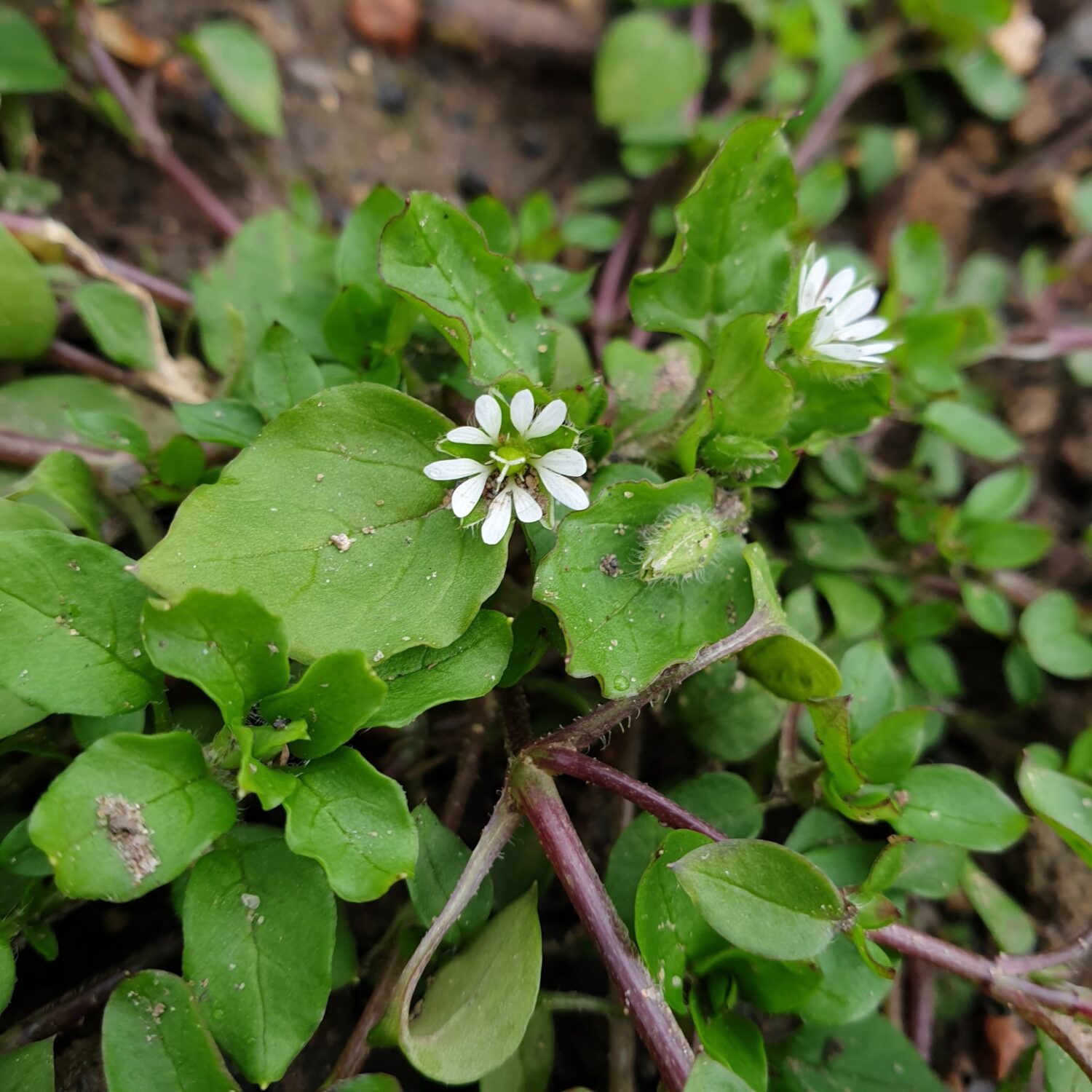
Common Chickweed Stellaria media
An ‘all year rounder’, Common Chickweed is abundant in disturbed soil including roadsides, pavements and waste ground.
Common Chickweed has small white flowers and the petals are typically no longer than three mm each. It is easily mistaken to have ten petals as all five petals are deeply cut.
The leaves are oval with pointed tips. It is often a straggling rather than upright plant with stems that lie along the ground.
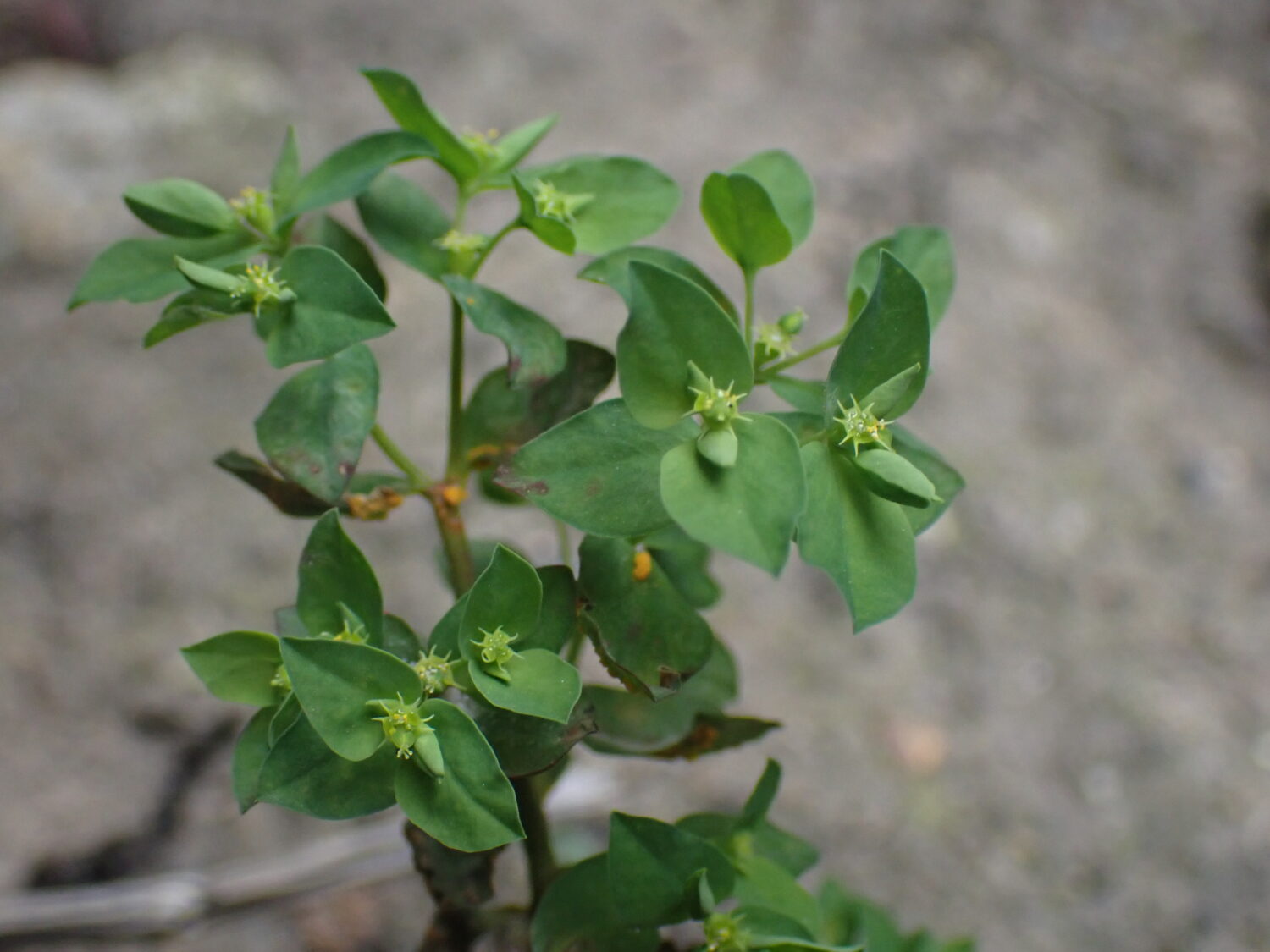
Petty Spurge Euphorbia peplus
Spurges have unusual and distinctive flowers.
The green-yellow flowers are held in cup-like structures and lack petals. Within each cup are small male flowers and female flowers, the latter consisting of a stalked ovary topped with stigmas.
The leaves are oval and untoothed, and attached to the stem by a short stalk.
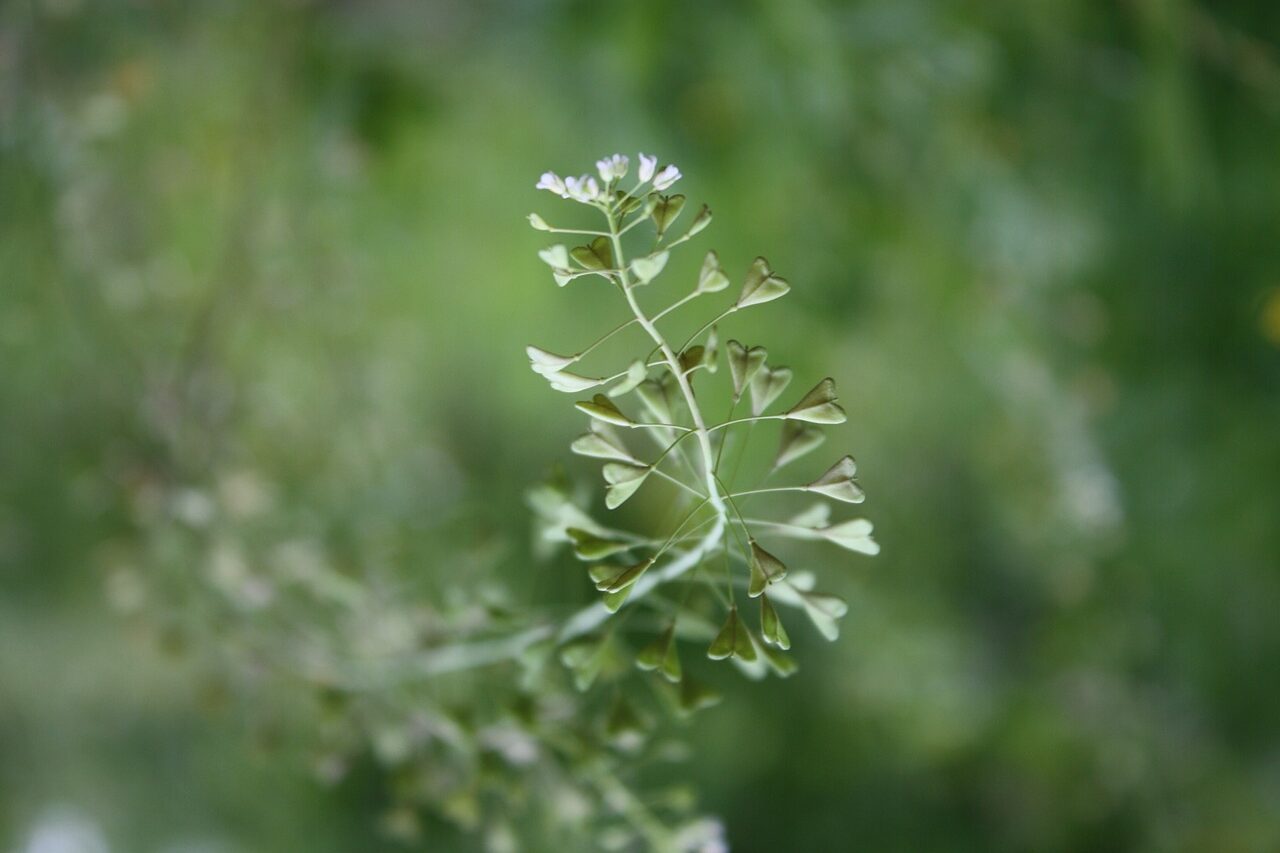
Shepherd’s Purse Capsella bursa-pastoris
Shepherd’s Purse is easily identified by its heart- or triangular-shaped seedpods. The seedpods are arranged alternately up the stem below the head of flowers.
The small white flowers are arranged at the top of the plant. The flowers are tiny with each petal measuring just three mm long. Its leaves are arranged in a rosette at the base of the plant and are variable in shape.
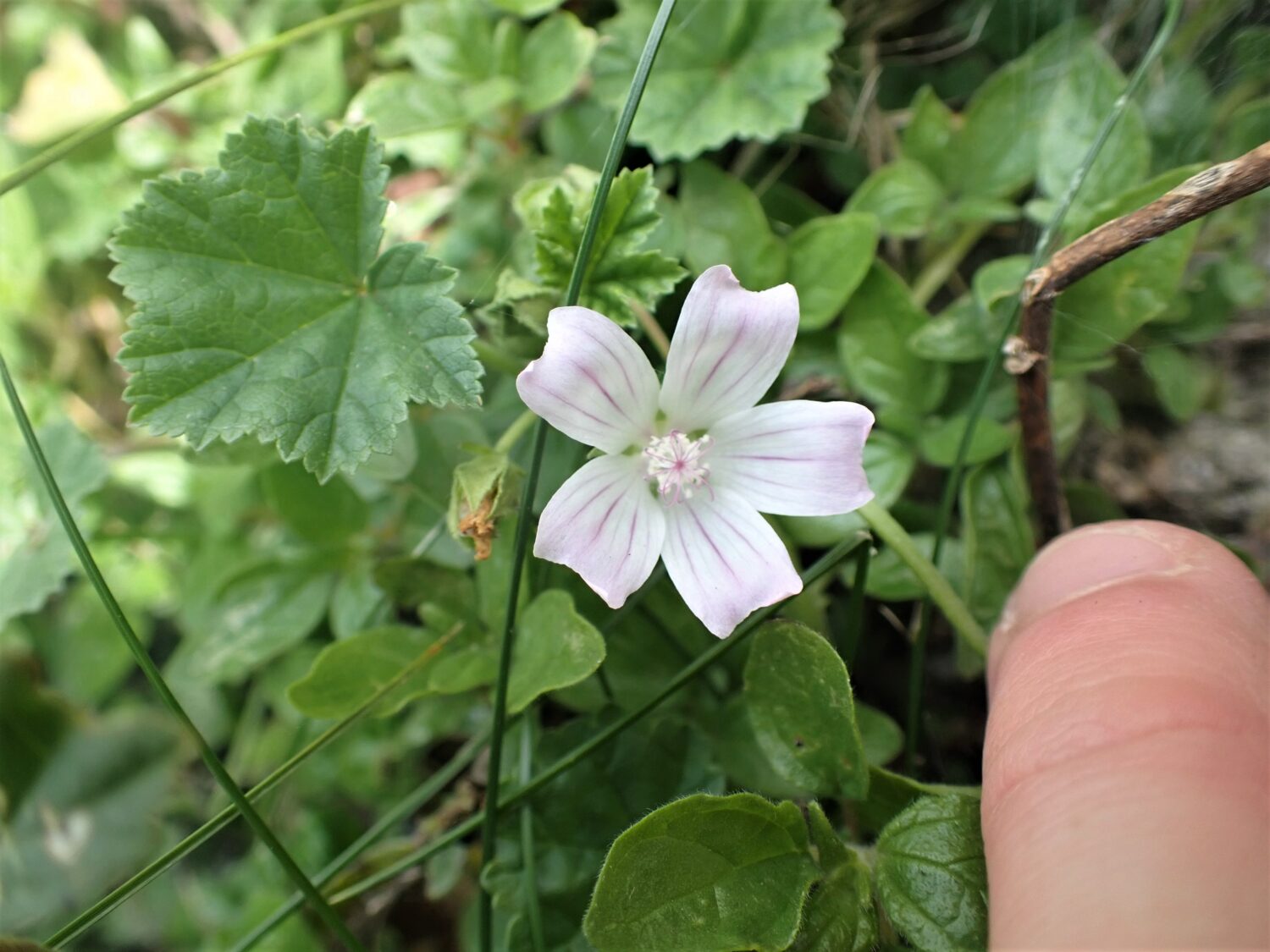
Take part in the New Year Plant Hunt
You can help by recording the wildflowers you find in bloom between 1-4 January.
Now in its tenth year, taking part in the New Year Plant Hunt is simple. Simply record the native and naturalised plants you find in bloom over a three hour period.
Find out all you need to know and share your observations of winter wildflowers below.